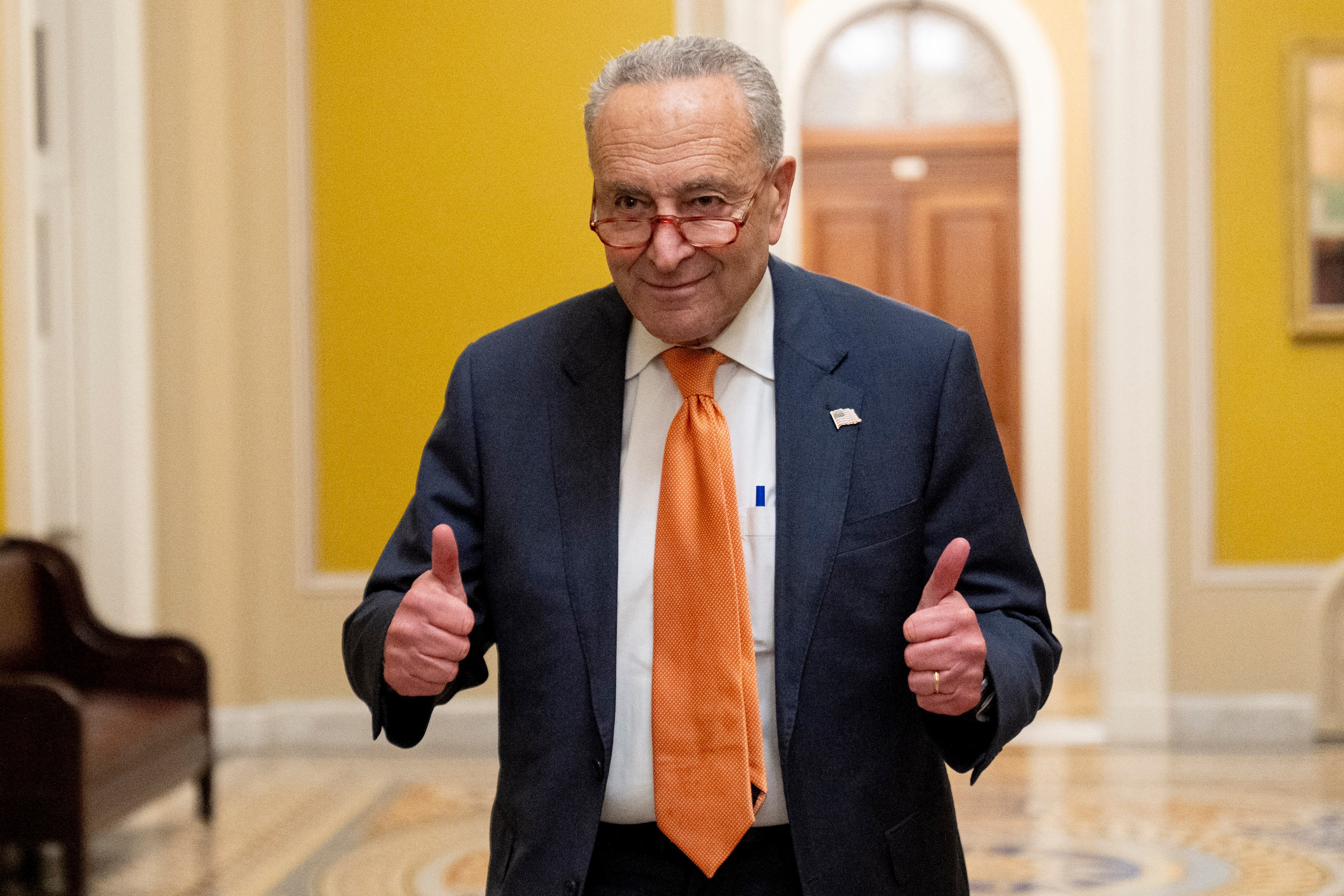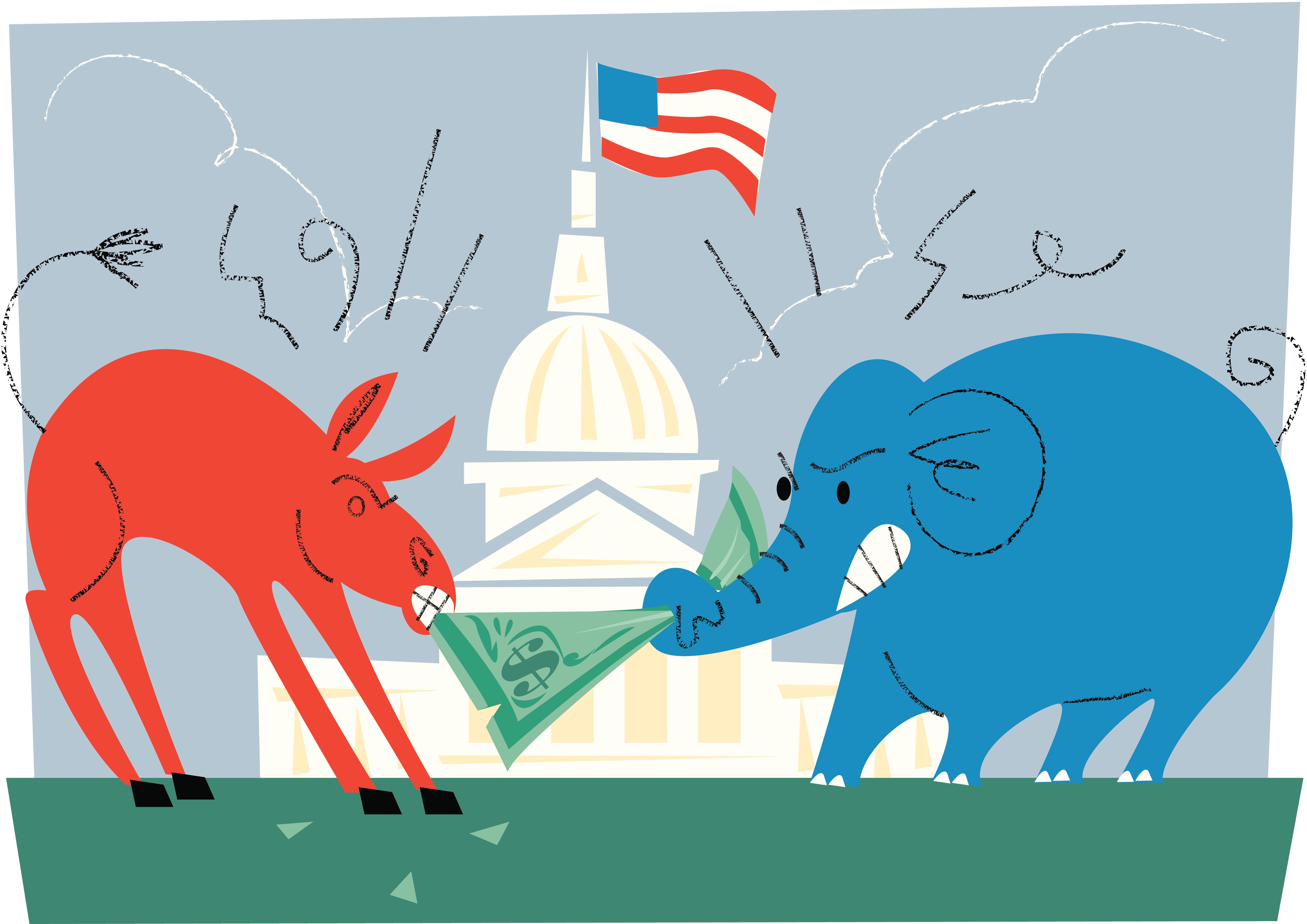This story was updated on Nov. 20 to reflect the current status of the CR.
Congress dodged a shutdown for the second time when the Senate overwhelmingly passed the House’s previously approved two-step continuing resolution late Wednesday. Then, President Biden signed the current stopgap bill on Friday, making it official. The CR buys lawmakers several more weeks to reach a consensus on a full-year spending bill. In the interim, federal agencies will be held to existing funding levels.
“While frontline federal employees are relieved that the threat of a government shutdown has been deferred for the next nine weeks, concerns remain that there are two more funding deadlines early in 2024,” Doreen Greenwald, president of the National Treasury Employees Union, told Federal Times.
RELATED

The latest extension creates two deadlines stacked on top of each other. The first one, Jan. 19, applies to four bills: Agriculture-Food and Drug Administration; Energy and water; military construction and Veterans Affairs; and Transportation and Housing and Urban Development.
The second deadline on Feb. 2 includes the eight appropriations bills covering everything else: Commerce, Justice, Defense, Financial Services and General Government, Homeland Security, Interior, Labor, Health and Human Services, Education, legislative branch and foreign operations.
If one only deadline is met, the government faces threat of a partial shutdown nearly a third of the way into the new fiscal year.
“As far as continuing resolutions go, I do believe it is a unique method of doing it,” said John Hatton, who leads policy and programs at the National Active and Retired Federal Employees Association, though experts said the concept is not entirely unprecedented.
In past years, Congress has similarly bite-sized the budget process via minibuses, especially when internal divisions make it difficult to reach agreement on a sweeping omnibus.
The approach led by newly minted House Speaker Mike Johnson, R-La., may have also signaled a reluctance to set a December deadline that would disrupt the holidays.
“I think one of House Republicans’ top concerns was avoiding the end of year legislative push,” said Andrew Lautz, a senior analyst with the Bipartisan Policy Center.
Under other circumstances, Congress might try to force through a massive spending bill that can include supplemental funding, extensions, reauthorizations and policy riders that generate a bill hundreds of pages long and with it, disdain among conservatives in the House and in the Senate, Lautz said.
Lautz also said that the first deadline falling in mid-January seems encouraging because it’s unlikely lawmakers would be able to turn around from the “proverbial nap over the holidays” and churn out a deal in the first week.
Still, the situation is far from ideal, budget experts said. Anything short of a full-year spending bill makes it difficult for agencies to plan longterm, project workforce needs and coordinate on large, multi-agency contracts with industry.
“I will vote for this bill to avoid a senseless shutdown, although I don’t care for this idea of two funding deadlines and double the shutdown risk,” said Sen. Patty Murray, D-Wash., chair of the Senate Appropriations Committee, on Wednesday before the vote.
Some have taken to federal employee forums online to criticize the plan, saying it feels like “one CR for the things the Republicans like, a second CR for things Dem[ocrats] like,” a user on Reddit wrote.
“I’m grateful that my paychecks won’t be messed with over the holidays but seriously[,] I’m sick of having to stress about this every 45 days,” wrote another.
RELATED

Experts Federal Times spoke to at federal unions and policy centers said it’s unclear what determined the split. There doesn’t seem to be clear indication of furloughing the most number of workers first, since many VA health care employees, for example, would continue working if the first deadline is missed, they said.
“You could slice it either way,” Lautz said. “You could say that Republicans would want to put their preferred priorities last to give them more time to consider those bills.”
That might explain why the Pentagon’s defense bill is on Feb. 2.
“[But for] bills that might be a bit easier to achieve from a bipartisan perspective, it might make more sense to put those on Jan. 19, rather than Feb. 2, because you expect there might be a deal that could come together more quickly than some of the stickier bills like like Labor-HHS-Education,” Lautz continued.
Strong bipartisan support for Veterans Affairs may have influenced it being given what some interpret as a first-order concern, experts said. There’s also momentum in the Senate for the first group of bills, in which three of the four have passed via minibus.
But even in first slate of bills, there are partisan snags. The House pulled its Transportation-HUD bill in part over disputes about Amtrak funding. The Agriculture bill routinely gets hung up on the Supplemental Nutrition Assistance Program and climate provisions.
Another philosophy could be that the Defense and the Labor-HHS-Education bills are grouped together because they often become embroiled in controversial policy riders, and Republicans and Democrats could negotiate the pair as a compromise, said NARFE’s Hatton.
It’s even possible that the two-step plan is the outcome of meeting in the middle between multiple separate deadlines and just one, Lautz said.
Speaker Johnson’s office did not respond to emailed requests for comment.
Whether the CR will make negotiations any easier remains to be seen. And in any case, none of the experts Federal Times interviewed said a CR is an acceptable way to budget long-term.
“I don’t know how they pick which agency to put where,” said Daniel Horowitz, deputy director of legislation at the American Federation of Government Employees. “But the good news is, it’s two to three months until the shutdown, potentially, instead of the end of this week. So we’re glad that sanity has prevailed for now.”
Molly Weisner is a staff reporter for Federal Times where she covers labor, policy and contracting pertaining to the government workforce. She made previous stops at USA Today and McClatchy as a digital producer, and worked at The New York Times as a copy editor. Molly majored in journalism at the University of North Carolina at Chapel Hill.





